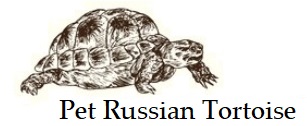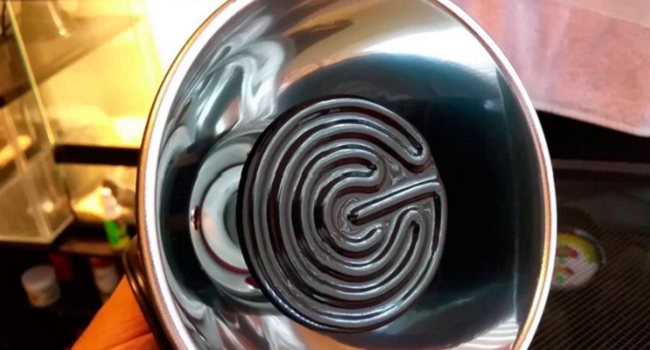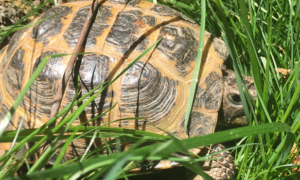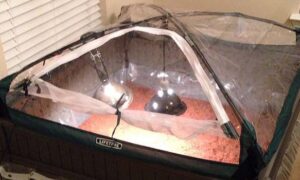Obtaining proper heat in a Russian tortoise enclosure is as important as proper UVB and diet. Correct heating promotes healthy tissues, increases blood circulation and ensures proper digestion, which is why it is important to use a heat bulb to ensure proper temperatures in a Russian tortoise enclosure.
For indoor enclosures, you want a basking place around 90-100°F with an ambient temperature no lower than 70°F. At night, the nighttime temperatures can dip lower, but you want to keep the nighttime temperatures in the mid-60s to low 70s.
In order to achieve correct heating, purchase a good heat bulb. Avoid most heating pads, as they can get TOO hot.
Ceramic Heat Emitter Bulbs

Ceramic heat emitters (CHE) produce heat as long as they are turned on, but they do not emit any light. When using CHE’s in an inside enclosure, you want to use a good UVB source for lighting. CHE’s can be left on throughout the day and night to achieve proper temperatures throughout a day.
CHE’s increase the ambient air temperature and can provide a good basking temperature. Keep ceramic heat emitting bulbs at least 12-inches away from the top of the Russian tortoise’s shell. Too hot, the bulb will easily burn the shell.
Common watts include 60W, 75W, 100W and 150W bulbs. Use a thermostat to ensure the proper temperatures for your Russian tortoise enclosure or house. Double check the temperature with a temperature gun.
Flood Bulbs

Flood bulbs will product light and heat. You’ll want to test the heat output with a temperature gun, but regular household incandescent flood bulbs can produce enough heat for indoor Russian tortoise enclosures. You will still need a UV source, like a UV tube.
Mercury Vapor Heat Bulbs
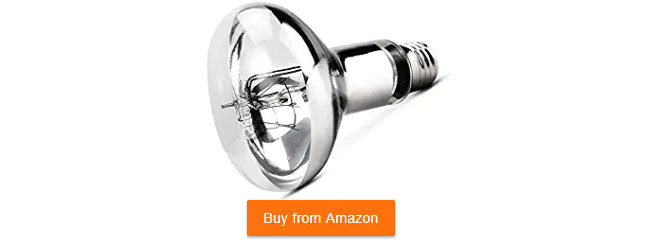
Mercury vapor bulbs, like ZooMed PowerSun, ExoTerra Solar Glo and Mega-Ray, provide UVA, UVB, light and heat in one bulb. These reptile heat bulbs are popular.
When using a mercury vapor bulb, check the UV emissions regularly. The biggest issue with this type of bulb is that the UV output can reduce quickly.
It is recommended that the bulb be replaced every six months, but to monitor the UV output, regular check the UV emissions with a solar meter. Some people have found the UV fall below the recommended range within three months, whereas others experience a longer lifespan.
The bulb may still produce heat and lighting, but the UV rays may be minimal over a longer span of time.
